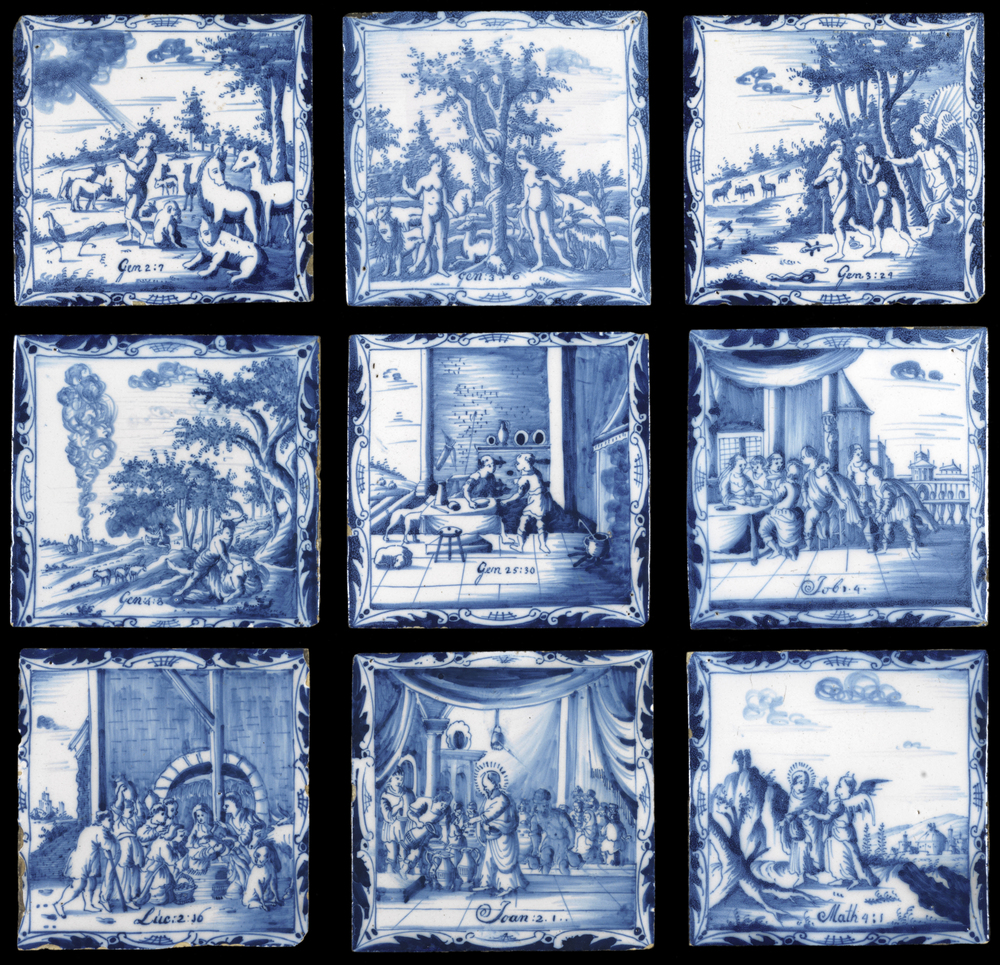
Top row, left to right:
Middle row, left to right:
Bottom row, left to right:
Delft, Netherlands, 18th century
Tin-glazed earthenware
Dr J.W.L. Glaisher Bequest
Tin-glazed tiles with Biblical scenes were widely produced in the Protestant world to decorate chimneys and hearths. These 9 Delftware examples depict episodes of food consumption or preparation from both the Old and New Testament, including the Wedding at Cana (bottom row, middle), when Christ turned water into wine to demonstrate God’s mercy, and The Temptation of Christ (bottom row, right) when Christ, famished after 40 days of fasting, refused Satan’s temptation to turn stones into bread. Each scene includes the relevant Biblical verse, so these tiles were instructive as well as decorative, teaching the viewer about good and bad food choices, which would have been particularly relevant in kitchens or dining rooms.</p>
